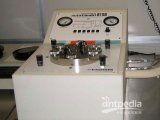
Monocytes are a class of phagocytes involved in non-specific immune defense that develop into macrophages. In plasma, monocytes ingest and destroy bacteria, and can form macrophages when they enter the extracellular space in tissues. In addition to the immune protection that monocytes provide, they may contribute to disease states such as arthritis and heart disease through an aberrant immune response. As with other immune cells, the immune function and differentiation of monocytes rely on communication with other cells through cell surface proteins. Cell surface proteins are involved in both interaction and adhesion with other cells and in transducing signals into the cellular interior. The LFA-1 integrin (Leukocyte function-associated molecule 1) is composed of two subunits, CD11a and CD18 and is involved in monocytes adhesion with ICAM-1 endothelial cells. Mac-1 is composed of the subunits CD11b and CD18 and is induced during inflammation as well. PECAM-1 mediates the migration of monocytes and other immune cells into inflamed tissues through interaction with vascular endothelial cells. CD44 interaction of leukocytes with hyaluronan in the extracellular matrix is induced by inflammation. VLA-4 is another integrin expressed on lymphocytes that plays a role in adhesion through interaction with its adhesion partner on endothelial cells, VCAM-1.
Contributor:
REFERENCES:







